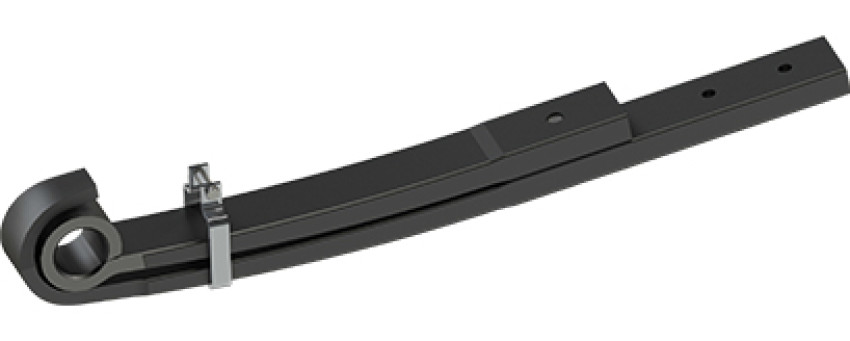
In the realm of vehicle suspension systems, the choice between multi-leaf springs and mono-leaf springs plays a crucial role in determining overall performance and ride quality. Each type has its unique characteristics and advantages, making the decision a critical one for vehicle owners and enthusiasts. This comprehensive guide delves into the differences between multi-leaf and mono-leaf springs, helping you make an informed decision based on your specific needs and preferences.
Understanding Multi-Leaf Springs:
Multi-leaf springs, also known as semi-elliptical springs, consist of multiple layers or leaves stacked on top of each other. These layers vary in length, with the longest at the bottom and successively shorter ones stacked above. This design imparts flexibility and load-bearing capacity to the suspension system. Multi-leaf springs are commonly found in various vehicles, from trucks and SUVs to commercial vehicles, owing to their ability to handle heavier loads.
Advantages of Multi-Leaf Springs:
Enhanced Load Capacity: Multi-leaf springs are known for their superior load-carrying capabilities, making them suitable for applications where heavy payloads are a regular occurrence.
Durability and Longevity: The layered construction of multi-leaf springs contributes to increased durability, providing a robust solution for vehicles subjected to demanding conditions.
Cost-Effectiveness: In terms of manufacturing and installation costs, multi-leaf springs often present a more budget-friendly option compared to some alternatives.
Understanding Mono-Leaf Springs:
On the other hand, mono-leaf springs, also known as single-leaf springs or parabolic springs, feature a single, tapered leaf. This design offers a progressive spring rate, meaning that as the load increases, the resistance also increases. Mono-leaf springs are commonly used in sports cars and performance-oriented vehicles.
Advantages of Mono-Leaf Springs:
Improved Handling and Performance: Mono-leaf springs are favored for their ability to provide a more responsive and sportier ride. The progressive spring rate contributes to enhanced handling characteristics.
Weight Reduction: With a single leaf, mono-leaf springs are generally lighter than their multi-leaf counterparts. This weight reduction can contribute to improved fuel efficiency and agility.
Aesthetics and Design Flexibility: The single-leaf design allows for more creative and aesthetically pleasing designs, making mono-leaf springs a popular choice for vehicles where appearance is a key consideration.
Choosing the Right Suspension for Your Needs:
Consider Vehicle Type and Use: For heavy-duty applications or vehicles frequently carrying substantial loads, multi-leaf springs are often the preferred choice. Mono-leaf springs are well-suited for performance-oriented vehicles and those where weight reduction is a priority.
Evaluate Ride Quality Preferences: If a smoother ride and load-carrying capacity are essential, multi-leaf springs may be more suitable. For drivers seeking a sportier, responsive ride, mono-leaf springs offer a favorable balance between comfort and performance.
Factor in Budgetary Constraints: Assessing the overall costs, including manufacturing, installation, and potential maintenance, can help align your choice with budgetary considerations.
The decision between multi-leaf springs and mono-leaf springs is a nuanced one, influenced by factors such as vehicle type, usage, performance expectations, and budget constraints. By understanding the unique characteristics and advantages of each suspension type, you can make an informed choice that aligns with your specific needs. Whether aiming for rugged durability or a dynamic driving experience, the right suspension choice is instrumental in optimizing your vehicle's performance.


